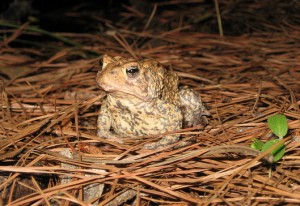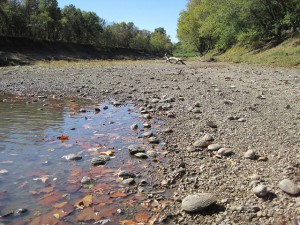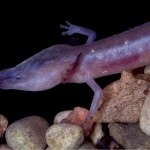How Do You Save Hundreds of Species in Texas ?
Last week, the African Rhino Specialist Group (AfRSG) confirmed the extinction of the western black rhinoceros. Although the species had initially been declared extinct in 2011, a final search failed to find any remaining rhinos.
While Texas doesn’t have a thriving rhinoceros population, the news got StateImpact Texas thinking about which species from our state may face extinction.
To find out, we interviewed John Davis, the Wildlife Diversity Program Director at the Texas Department of Parks and Wildlife. He talked about certain species’ most pressing problems, the drought’s effect on wildlife, and how the TPWD chooses what plants and animals to focus on.
Q: I was hoping we could start by listing what, in your view, are the most at-risk species [in Texas] to become extinct.
A: I’m sorry, but I can’t answer that. We actually have over 440 species that are considered to be globally rare, which means they are the most imperiled. I could go through that list and pull out a few, but I’m not really sure it is possible for me to answer. Now another reason why that answer is difficult is the fact that is there are many species that we believe are rare, but the truth is we don’t have enough resources to determine “is species A is rarer than species B or species C.” To really try to prioritize which are the rarest of the rare is not a real useful ranking at this point.
Q: To come at that from a different direction, are there any trends with specific species that you find alarming or concerning?
A: The answer is yes. There are lots of trends that I find very disconcerting. Let me give you an example. The Houston toad is a toad that is found East of Austin. It at one time had a much larger range, but slowly and surely over time, as landowners began to change the way they manage land, as development occurred, the habitat has changed. If you add on top of that the possibility of amphibian diseases out there like chytrid fungus, and also the recent large, devastating fires that happened in Bastrop, you end up creating unfortunately a perfect storm that puts species at tremendous risk.
Q: Are there any species that you feel are particularly at-risk given the projections of Texas’ population growth?
A: I’ll even take it a step further. My concern is not only the direct urban sprawl, but the resource use that comes from doubling our population by 2050, I think that’s the projection. So you not only have the landscape that these cities take up, but also you have water usage and energy generation and highways and things like that. If you start looking at water resources, then all of the rare species in our lakes and rivers, specifically our rivers and streams, rely on sufficient, good quality water.
Q: Given the importance of water resources, can you talk about the impact that the drought has had on these creatures?
A: Drought is one of those interesting and very difficult issues to talk definitively about. The thing to keep in mind is any native species that’s in a healthy condition, those species are well adapted to drought. When species begin to suffer problems based upon invasive species, and crowding from [habitat] fragmentation and things like that, and then you throw the drought on top of that, that’s where it really begins to get difficult.
To use an amphibian again as an example, many of these species may live 3 to 5 years. Many of these species are what we call explosive breeders, which means that the conditions have to be right, and then they breed only on one or two nights out of the year. In drought conditions, those conditions may not get right for that entire year, so you lose an entire year of reproductive capacity.
Q: Which species has the TPWD focused on lately?
A: We’ve had tremendous amount of staff time and landowners working on [the lesser prairie chicken]. This morning, I saw an e-mail that that says we will have 440,000 acres under voluntary management with the sole purpose of preventing the need to list that species [as endangered].
We’ve also got a lot of work being done on mussels. Freshwater mussels are a suite of species that we’ve spent a lot of money on and done a lot of research on in this drought. We have in some cases pulled some of those [mussel] populations and put them into temporary hold facilities, so when the water recovers we put them back into the area from which they came.
Click here to watch the rarely-viewed mating dance of the lesser prairie chicken.
Q: What sort of prioritization or triage do you do to decide which species to work on, to spend money on, and which to set aside for later?
A: You’ve hit on kind of the big question that we debate all the time. We have extremely limited resources. So what we do on a regular basis is we run as many of these species as we can through a prioritization process. We have developed over the last 5 years the Texas Conservation Action Plan, which outlines all the conservation issues in Texas. In that action plan there’s 1310 species of greatest conservation need. How we prioritize where we spend money is based upon these rankings and this species of greatest conservation need list, as well as the ever-changing landscape that we see. It’s much more effective and much less expensive to manage species before they become extremely rare than it is to try to manage a species once it’s on the brink of being lost. That’s a very expensive proposition.
This interview was edited for clarity and content.



